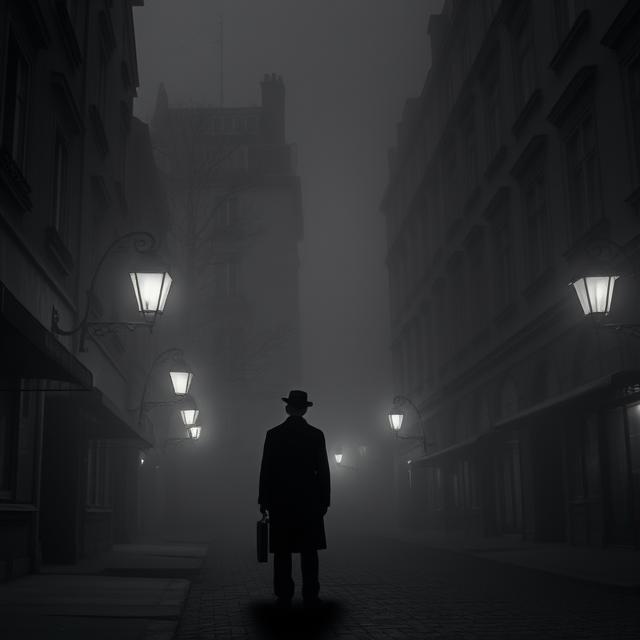The Nazi occupation of Paris, from 1940 to 1944, cast a long and oppressive shadow over the City of Lights. Beneath the veneer of forced normalcy, Parisians endured shortages, fear, and the constant presence of a brutal occupying force. In this environment of desperation and moral decay, the case of Marcel Petiot, a French doctor who murdered and dismembered numerous victims in the heart of Paris, emerged as a particularly gruesome and unsettling episode. While not directly a case of cannibalism arising solely from the Nazi occupation itself, Petiot’s actions and the backdrop of wartime horror intertwine in a way that evokes the darkest possibilities of human depravity in extreme circumstances, leading to the chilling moniker “The Butcher of Paris.”
Marcel Petiot was born in 1897 and had a long history of erratic behavior, petty crime, and mental instability. He became a doctor and established a practice in Villeneuve-sur-Yonne and later in Paris. Beneath the respectable facade of a physician, Petiot harbored a deeply disturbed mind and a propensity for violence and deception.
The horrors of Petiot’s crimes came to light after the liberation of Paris in 1944. Neighbors of his residence on Rue Le Sueur reported a foul odor and persistent smoke emanating from the property. When police investigated, they discovered a charnel house within: human remains, including dismembered bodies, scattered throughout the building and in a lime pit in the courtyard. The scale and brutality of the discoveries were shocking, even in a city still reeling from the atrocities of war.
The investigation revealed a macabre scheme orchestrated by Petiot. He had been luring individuals, many of whom were Jewish or members of the French Resistance attempting to flee Nazi persecution, to his residence under the false pretense of helping them escape to South America for a large sum of money. Instead, Petiot systematically murdered his victims, robbing them of their valuables and then dismembering and attempting to dispose of their bodies.
The exact number of Petiot’s victims remains unknown, but estimates range from at least 27 to potentially many more. The chaotic conditions of wartime Paris, with its missing persons and general lawlessness, likely allowed Petiot’s crimes to go undetected for a significant period.
While Petiot’s primary motive appears to have been financial gain, the context of the Nazi occupation cannot be entirely dismissed. The breakdown of societal norms, the pervasive violence, and the constant threat of death and disappearance created an environment where extreme acts of depravity could occur, and perhaps even be rationalized in twisted ways. Petiot exploited the desperation of those seeking to escape the Nazis, using the very real dangers of the occupation as a lure for his victims.
The rumors surrounding Petiot’s actions extended to the horrific suggestion of cannibalism. Some accounts, fueled by the gruesome nature of the body disposal and the extreme circumstances of wartime shortages, whispered that Petiot may have consumed parts of his victims. However, these rumors have never been substantiated by concrete evidence. The documented motive remained robbery and the disposal of evidence through dismemberment and burning.
The trial of Marcel Petiot in 1946 was a sensational affair, capturing the morbid fascination of a France still grappling with the trauma of occupation and collaboration. Petiot himself was a theatrical and uncooperative defendant, feigning insanity and attempting to manipulate the proceedings. He claimed he was part of the Resistance and that his victims were Nazi collaborators or black marketeers whose deaths were justified. These claims were largely dismissed by the court.
Petiot’s defense of insanity was also rejected, and he was ultimately convicted of 27 murders, though it is widely believed he was responsible for more. He was sentenced to death and executed by guillotine in 1946.
The case of Marcel Petiot, the “Butcher of Paris,” serves as a chilling example of the depths of human depravity that can emerge, even amidst the horrors of war and occupation. While the direct link to cannibalism remains unsubstantiated, the fact that such rumors even circulated speaks to the extreme anxieties and moral decay of the time. Petiot exploited the very real terror of Nazi occupation for his own monstrous ends, his crimes becoming a dark reflection of the era’s pervasive violence and desperation. The shadow of the swastika over Paris provided a backdrop against which one man’s monstrous urges played out in a truly horrifying fashion.
Want to explore the shadows even deeper? For more chilling cases like this, visit SinisterArchive.com, where the legends are real.




